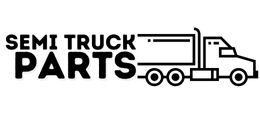Rev Up Your Ride Optimizing Truck Performance with Upgraded Body Parts
Introduction to Truck Body Parts
Truck body parts serve as the backbone of any commercial vehicle, impacting its performance, safety, and overall functionality. Whether it’s hauling heavy loads across long distances or navigating through challenging terrains, the quality and condition of these components play a pivotal role in ensuring smooth operations.
In this chapter, we embark on a journey to explore the fundamental significance of truck body parts. Beyond mere aesthetics, these components serve critical purposes, from providing structural support to enhancing aerodynamics. Understanding the role they play is essential for any truck owner or operator looking to optimize their vehicle’s performance.
Through this exploration, we’ll uncover the various functions and features of truck body parts, shedding light on why they are more than just superficial additions. From the chassis and frame to the cab and cargo area, each element contributes to the overall integrity and efficiency of the truck.
Moreover, we’ll touch upon the evolving landscape of truck body parts, where advancements in materials and technologies continue to redefine industry standards. Whether it’s the integration of lightweight yet durable materials like aluminum alloys or the incorporation of aerodynamic designs for enhanced fuel efficiency, staying abreast of these developments is crucial for staying ahead in the competitive trucking industry.
In essence, this chapter sets the stage for a deeper dive into the world of truck body parts, laying the groundwork for understanding their importance and impact on truck performance. As we progress through subsequent chapters, we’ll delve into specific aspects of upgrading these components to unlock their full potential and optimize overall truck performance.
Benefits of Upgrading Truck Body Parts
Upgrading truck body parts offers a plethora of benefits that extend far beyond mere cosmetic enhancements. In this chapter, we’ll delve into the numerous advantages that come with investing in quality upgrades for your commercial vehicle.
First and foremost, upgrading truck body parts enhances durability and longevity. By replacing worn-out or outdated components with high-quality materials, such as stainless steel or reinforced plastics, truck owners can significantly prolong the lifespan of their vehicles. This not only reduces the frequency of repairs but also minimizes downtime, leading to increased productivity and profitability.
Furthermore, upgraded body parts can improve overall performance and efficiency. Whether it’s installing aerodynamic enhancements to reduce drag and improve fuel economy or upgrading suspension systems for smoother rides and better handling, these upgrades contribute to enhanced operational efficiency and cost savings in the long run.
In addition to tangible performance improvements, upgrading truck body parts can also have a positive impact on safety. Modern safety features, such as reinforced bumpers, advanced lighting systems, and collision avoidance technology, help mitigate risks on the road and protect both drivers and pedestrians from potential accidents.
Moreover, upgrading truck body parts can enhance the aesthetic appeal of your vehicle, creating a professional image that instills confidence in clients and stakeholders. Whether you’re hauling freight or providing transportation services, a well-maintained and visually appealing truck can leave a lasting impression and differentiate your business from competitors.
In summary, the benefits of upgrading truck body parts are multifaceted and far-reaching. From improved durability and performance to enhanced safety and aesthetics, investing in quality upgrades is essential for maximizing the potential of your commercial vehicle and staying ahead in today’s competitive market.
Engineered for Durability: Quality Materials Matter
The durability of truck body parts is paramount for ensuring the longevity and reliability of commercial vehicles. In this chapter, we’ll explore the significance of using high-quality materials in the construction and maintenance of these crucial components.
Quality materials form the foundation of durable truck body parts. Manufacturers utilize a range of materials, including aluminum, stainless steel, fiberglass, and advanced polymers, to engineer parts that can withstand the rigors of heavy-duty use. These materials offer exceptional strength, corrosion resistance, and impact tolerance, ensuring that truck body parts remain intact and functional even in the most demanding operating conditions.
One of the key benefits of using quality materials is their ability to withstand environmental factors and harsh climates. Whether it’s extreme temperatures, corrosive chemicals, or abrasive elements encountered on the road, high-quality materials provide superior protection against degradation and deterioration, prolonging the lifespan of truck body parts and reducing the need for frequent replacements.
Moreover, quality materials contribute to the overall performance and efficiency of commercial vehicles. Lightweight yet durable materials, such as aluminum alloys, help reduce vehicle weight without compromising strength, resulting in improved fuel economy and operational efficiency. Additionally, materials engineered for specific applications, such as impact-resistant plastics for bumpers and panels, enhance safety and reliability on the road.
In summary, the choice of materials plays a crucial role in determining the durability and performance of truck body parts. By opting for high-quality materials engineered for durability and reliability, truck owners can ensure that their vehicles remain operational and efficient for years to come, minimizing maintenance costs and maximizing uptime.
Enhancing Safety with Upgraded Truck Body Parts
Safety is paramount in the world of commercial trucking, and upgraded body parts play a crucial role in ensuring the well-being of drivers, passengers, and pedestrians alike. In this chapter, we’ll delve into how upgrading specific truck body parts can significantly enhance safety on the road.
One of the primary areas where upgraded body parts contribute to safety is in collision protection. Reinforced bumpers, side guards, and grille guards are designed to absorb impact energy and minimize damage in the event of a collision, reducing the risk of injury to occupants and mitigating costly repairs.
Furthermore, advanced lighting systems can greatly improve visibility, particularly in low-light conditions or adverse weather. Upgrading to high-intensity LED headlights, taillights, and turn signals not only enhances the truck’s visibility to other motorists but also provides better illumination of the road ahead, reducing the likelihood of accidents.
In addition to collision protection and visibility enhancements, upgraded body parts can also incorporate advanced safety features such as proximity sensors, backup cameras, and lane departure warning systems. These technologies help drivers avoid potential hazards, such as blind spots and lane drift, by providing real-time alerts and assisting with maneuvering in tight spaces.
Moreover, ergonomic upgrades to the interior cabin, such as adjustable seating and improved driver interfaces, can reduce driver fatigue and enhance comfort during long hauls, ultimately improving alertness and responsiveness behind the wheel.
In summary, upgrading truck body parts goes beyond mere performance enhancements—it’s also about prioritizing safety on the road. By investing in advanced safety features and technologies, truck owners can create a safer operating environment for themselves and others, reducing the likelihood of accidents and ensuring a higher standard of care in commercial trucking operations.
Aerodynamics and Fuel Efficiency
Optimizing aerodynamics is key to improving fuel efficiency in commercial trucks. In this chapter, we’ll explore how upgrading specific truck body parts can lead to significant fuel savings and operational cost reductions.
Aerodynamic enhancements play a crucial role in reducing drag and improving airflow around the truck, thereby reducing fuel consumption. Upgrading to aerodynamic side skirts, roof fairings, and cab extenders can minimize air resistance and turbulence, resulting in smoother airflow and reduced fuel consumption, especially at highway speeds.
Another area where aerodynamics can impact fuel efficiency is in trailer design. Upgrading to streamlined trailer skirts and tails can help streamline airflow and reduce drag, resulting in additional fuel savings over long hauls.
In addition to external aerodynamic upgrades, internal aerodynamics can also play a role in improving fuel efficiency. Upgrading to more aerodynamically designed cab interiors, such as streamlined dashboards and seating arrangements, can reduce air resistance and improve overall vehicle efficiency.
Furthermore, technological advancements such as predictive cruise control and automated transmission systems can optimize engine performance and reduce fuel consumption by adjusting speed and gear ratios based on road conditions and terrain.
By investing in aerodynamic upgrades and advanced fuel-saving technologies, truck owners can achieve significant fuel savings and operational cost reductions over the lifetime of their vehicles. Not only does this contribute to a greener and more sustainable transportation industry, but it also improves the bottom line for trucking companies by reducing fuel expenses and increasing profitability.
Customization Options for Improved Functionality
Customization offers a tailored approach to optimizing truck functionality to meet specific needs and preferences. In this chapter, we’ll explore the myriad customization options available for truck body parts, allowing owners to enhance performance, efficiency, and overall functionality.
One of the most common customization options is the modification of truck beds or cargo areas to accommodate specific types of cargo or equipment. This may involve installing custom racks, shelves, or compartments to organize tools and supplies more efficiently, or adding features such as lift gates or ramps to facilitate loading and unloading operations.
Additionally, truck owners can customize exterior body parts to improve functionality and performance. Upgrading to heavy-duty bumpers, grille guards, and brush guards can provide added protection against impacts and debris, especially in off-road or rugged terrain environments. Customizing fenders, mud flaps, and splash guards can also help prevent damage from road debris and weather elements.
Interior customization options can enhance driver comfort and convenience, contributing to overall productivity and satisfaction. Upgrading seating, flooring, and cabin amenities can create a more ergonomic and enjoyable driving experience, reducing fatigue and improving alertness during long hauls.
Moreover, technology-driven customization options, such as GPS navigation systems, telematics, and onboard diagnostic tools, can enhance efficiency and streamline operations. These systems provide real-time data and insights to optimize route planning, monitor vehicle performance, and enhance fleet management practices.
By embracing customization options for truck body parts, owners can tailor their vehicles to meet specific operational requirements and preferences, ultimately improving efficiency, productivity, and overall satisfaction. Whether it’s enhancing cargo capacity, improving safety features, or integrating advanced technologies, customization empowers truck owners to optimize their vehicles for peak performance in any application or environment.
Maintenance Tips for Extended Lifespan
Proper maintenance is essential for preserving the performance and longevity of truck body parts. In this chapter, we’ll provide practical tips and advice on how to maintain and care for upgraded parts to ensure they remain in optimal condition throughout their lifespan.
Regular inspections are crucial for identifying any signs of wear or damage early on. Establishing a routine maintenance schedule that includes visual inspections of key components such as bumpers, mirrors, and lighting systems can help detect issues before they escalate, preventing costly repairs and downtime.
In addition to visual inspections, it’s important to perform regular cleaning and lubrication of truck body parts to remove dirt, grime, and debris that can accumulate over time. This not only helps maintain the appearance of the vehicle but also prevents corrosion and prolongs the lifespan of components such as hinges, latches, and seals.
Furthermore, following manufacturer recommendations for maintenance intervals and procedures is essential for ensuring proper functioning and warranty compliance. This may include replacing worn-out parts, performing fluid changes, and conducting diagnostic tests to identify potential issues before they impact performance.
Investing in quality replacement parts and accessories is another important aspect of maintenance. Using genuine OEM parts or aftermarket components from reputable suppliers ensures compatibility and reliability, minimizing the risk of premature failure and maximizing the lifespan of truck body parts.
Finally, staying informed about industry best practices and emerging technologies can help owners stay ahead of maintenance trends and proactively address potential issues. Networking with other truck owners, attending trade shows, and seeking advice from experienced professionals are valuable resources for staying up-to-date on maintenance techniques and recommendations.
By following these maintenance tips and incorporating them into a regular maintenance routine, truck owners can extend the lifespan of their upgraded body parts, optimize performance, and maximize the return on investment in their commercial vehicles.
Conclusion and Recommendations
As we conclude our exploration of upgrading truck body parts for optimal performance, it’s evident that these components play a pivotal role in the efficiency, safety, and overall functionality of commercial vehicles. Throughout this journey, we’ve uncovered the numerous benefits that come with investing in quality upgrades, from improved durability and performance to enhanced safety and aesthetics.
By prioritizing upgrades that utilize high-quality materials and incorporate advanced technologies, truck owners can significantly enhance the longevity and reliability of their vehicles. Whether it’s upgrading to aerodynamic enhancements for fuel efficiency, installing advanced safety features for collision protection, or customizing interiors for driver comfort, there’s no shortage of options available to optimize truck performance to meet specific needs and preferences.
Furthermore, we’ve emphasized the importance of regular maintenance and care for upgraded body parts to ensure they remain in optimal condition throughout their lifespan. By following recommended maintenance intervals, performing routine inspections, and using quality replacement parts, truck owners can maximize the return on investment in their commercial vehicles and minimize costly repairs and downtime.
In conclusion, upgrading truck body parts is not just about enhancing performance—it’s about investing in the future of your business. By embracing innovation, prioritizing safety, and staying proactive with maintenance, truck owners can unlock the full potential of their vehicles and stay ahead in today’s competitive market. Whether you’re hauling freight, providing transportation services, or operating a fleet of commercial vehicles, upgrading truck body parts is an essential step towards achieving optimal performance and success.
For detailed information, you can contact us at Truck Body Parts


